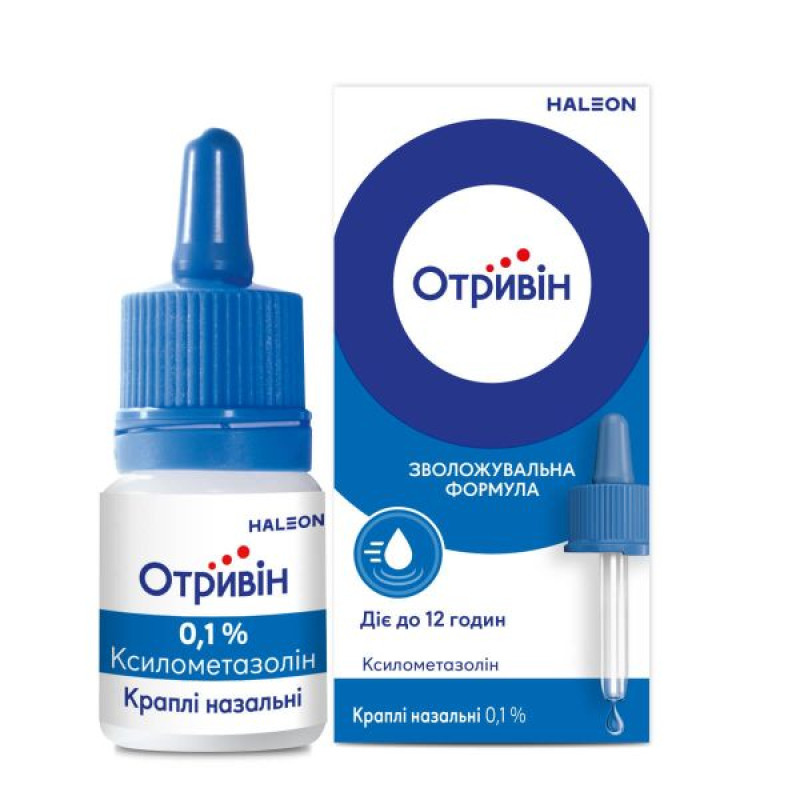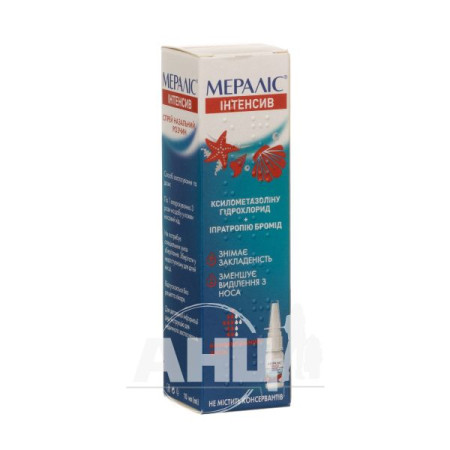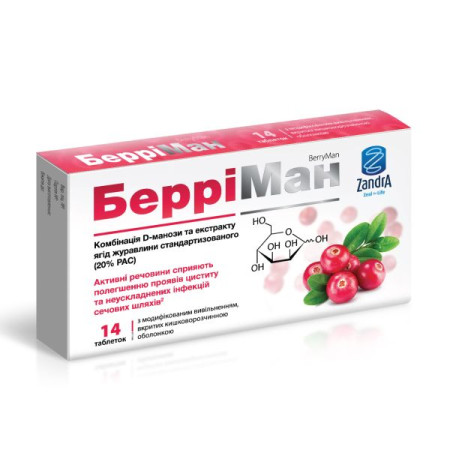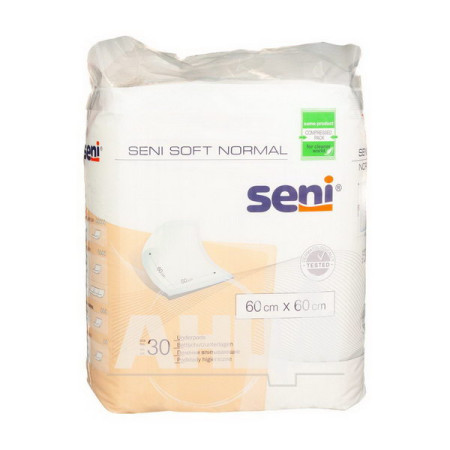Otrivin nasal drops 0.1% bottle with pipette cap 10 ml

Instructions for use Otrivin nasal drops 0.1% bottle with pipette cap 10 ml
Composition
active ingredient: xylometazoline hydrochloride;
1 ml of solution contains xylometazoline hydrochloride 0.5 mg or 1 mg;
Excipients: sodium dihydrogen phosphate, dihydrate; sodium hydrogen phosphate, dodecahydrate; disodium edetate; benzalkonium chloride; sorbitol solution, non-crystallizing (E 420); hypromellose; sodium chloride; purified water.
Dosage form
Nasal drops.
Main physicochemical properties: transparent solution from colorless to slightly yellowish, practically odorless.
Pharmacotherapeutic group
Drugs used in diseases of the nasal cavity. Anti-edematous and other drugs for local use in diseases of the nasal cavity. Sympathomimetics, simple drugs. ATX code R01A A07.
Pharmacological properties
Pharmacodynamics.
Xylometazoline is a sympathomimetic agent that acts on α-adrenergic receptors.
Xylometazoline, when applied nasally, causes constriction of the blood vessels of the nasal mucosa and adjacent areas of the nasopharynx, thus eliminating edema and hyperemia of the nasal and nasopharynx mucosa, and also reduces the associated increased mucus secretion and facilitates the removal of blocked secretions from the nose, which helps to clear the nasal passages and facilitate nasal breathing.
The effect of the drug begins within 2 minutes after application and lasts up to 12 hours.
The drug is well tolerated, including by patients with sensitive mucous membranes, and does not reduce mucociliary function. Laboratory tests have shown that xylometazoline reduces the infectious activity of human rhinovirus, which is associated with the common cold.
Thanks to moisturizing components (sorbitol, hypromellose), Otrivin nasal drops help with dryness and irritation of the nasal mucosa. The drug has a balanced pH value within the limits characteristic of the nasal cavity.
Pharmacokinetics.
When applied topically, the drug is practically not absorbed, the concentrations of xylometazoline in blood plasma are so low that they are practically undetectable (the concentration in blood plasma is close to the detection limit).
Xylometazoline does not have mutagenic properties. Also, in animal studies, no teratogenic effects of xylometazoline were detected.
Indication
Symptomatic treatment of nasal congestion due to colds, hay fever, other allergic rhinitis, and sinusitis.
To facilitate the outflow of secretions in diseases of the paranasal sinuses.
Adjunctive therapy in cases of otitis media (to eliminate swelling of the mucous membrane).
To facilitate rhinoscopy.
Contraindication
Hypersensitivity to xylometazoline, to one of the excipients or to other sympathomimetic amines; angle-closure glaucoma, transsphenoidal hypophysectomy and surgical interventions with exposure of the meninges in history, dry rhinitis (rhinitis sicca) or atrophic rhinitis. Patients receiving concomitant treatment with MAO inhibitors (see section "Interaction").
Interaction with other medicinal products and other types of interactions
Monoamine oxidase inhibitors (MAOIs): Xylometazoline may potentiate the effects of monoamine oxidase inhibitors and induce hypertensive crisis. Do not use xylometazoline in patients who are taking or have taken MAOIs within the last two weeks.
Tri- and tetracyclic antidepressants: with simultaneous use of tri- or tetracyclic antidepressants and sympathomimetic drugs, the sympathomimetic effect of xylometazoline may be enhanced, therefore the simultaneous use of such drugs is not recommended.
When used together with β-blockers, it may cause bronchial spasm or a decrease in blood pressure.
Application features
Otrivin, nasal drops 0.05%, should not be used in children under 2 years of age.
Use in children aged 2 to 12 years should be under adult supervision.
The drug should not be used in children for longer than 5 consecutive days.
Otrivin, nasal drops 0.1%, should not be used in children under 12 years of age.
The duration of treatment should not exceed 5 days without a break. Prolonged or excessive treatment with xylometazoline may cause secondary swelling of the nasal mucosa with the risk of chronic rhinitis and/or atrophy of the nasal mucosa.
The drug, like other sympathomimetics, should be prescribed with caution to patients who have strong reactions to adrenergic agents, manifested in the form of insomnia, dizziness, tremor, cardiac arrhythmia or increased blood pressure. The recommended dose of the drug should not be exceeded, especially when treating children and the elderly.
Patients with long QT syndrome receiving xylometazoline are at increased risk of serious ventricular arrhythmias. Nasal irrigation with saline is recommended as first-line therapy. Otrivin nasal drops can be used as a second-line treatment.
The product contains benzalkonium chloride (0.0025 mg benzalkonium chloride per 25 mg dose, equivalent to 0.100 mg/ml), which may cause swelling of the nasal mucosa, especially in case of prolonged use.
Isolated cases of posterior reversible encephalopathy syndrome (PRES)/reversible cerebral vasoconstriction syndrome (RCVS) have been reported with the use of sympathomimetic drugs. The reported symptoms included sudden severe headache, nausea, vomiting and visual disturbances. In most cases, symptoms improved or resolved within a few days after appropriate treatment. The drug should be discontinued immediately and a doctor consulted if signs/symptoms of PRES/RCVS develop.
Use during pregnancy or breastfeeding
The drug should not be used during pregnancy due to the potential vasoconstrictor effect. There is no evidence of any adverse effects on the infant. It is not known whether xylometazoline is excreted in breast milk, so caution is required, and the drug should be used during breastfeeding only as prescribed by a doctor. Prolonged use should be avoided during breastfeeding, due to the risk of adverse effects in the infant (tachycardia, agitation, increased blood pressure).
Fertility.
There are no adequate data on the effect of Otrivin on fertility. Since the systemic exposure to xylometazoline hydrochloride is very low, the likelihood of an effect on fertility is extremely low.
Ability to influence reaction speed when driving vehicles or other mechanisms
The drug usually has no or negligible influence on the ability to drive or use machines. With prolonged use of the drug or its use in high doses, its effect on the cardiovascular system cannot be ruled out.
Method of administration and doses
Nasal drops 0.05%:
Use in children aged 2 to 12 years under adult supervision.
For children aged 2 to 6 years, it is usually sufficient to instill 1–2 drops into each nasal passage 1–3 times a day. For children aged 6–12 years, the dose may be 1–4 drops into each nasal passage 2–3 times a day. The interval between applications should be at least 8–10 hours. Do not use more than 3 times in each nasal passage per day.
The duration of treatment depends on the course of the disease and should not exceed 5 days without a break. 1 drop of Otrivin 0.05% contains 0.0125 mg of xylometazoline hydrochloride.
Nasal drops 0.1%:
Apply to adults and children over 12 years of age 2–4 drops in each nasal passage up to 3 times a day. The interval between applications should be at least 8–10 hours. Apply no more than 3 times in each nasal passage per day.
The duration of treatment depends on the course of the disease and should not exceed 5 days without a break. 1 drop of Otrivin 0.1% contains 0.025 mg of xylometazoline hydrochloride.
How to use the drops:
Clean your nose thoroughly before using the drug;
tilt your head back as far as is comfortable, or while lying in bed, hang your head off the edge of the bed;
Put drops into each nostril and keep your head tilted back for a short time so that the medicine is distributed throughout the nose;
after use, clean and dry the pipette cap before closing the bottle;
To prevent infection, only one person should use the bottle.
The last application is recommended immediately before bedtime.
Children
Otrivin, nasal drops 0.05%, do not use in children under 2 years of age.
Use in children aged 2 to 12 years is recommended only under adult supervision.
Otrivin, nasal drops 0.1%, should not be used in children under 12 years of age.
Overdose
In case of severe intoxication, the patient should be hospitalized, and emergency symptomatic treatment should be carried out under medical supervision. Medical care should include observation of the patient for several hours. There is no specific antidote, atropine can be used in case of bradycardia. In case of severe overdose accompanied by cardiac arrest, resuscitation measures should last at least 1 hour.
Side effects
Adverse reactions are listed below by system organ class and frequency: very common (≥ 1/10), common (≥ 1/100 - < 1/10), uncommon (≥ 1/1000 - < 1/100), rare (≥ 1/10,000 - < 1/1000), very rare (< 1/10,000).
On the part of the immune system:
very rare: hypersensitivity reactions, including angioedema, rash, itching.
From the nervous system:
common: headache; uncommon: insomnia.
On the part of the organs of vision:
very rare: temporary visual impairment.
From the cardiovascular system:
very rare: irregular or rapid heartbeat, hypertension, arrhythmia.
Respiratory, thoracic and mediastinal disorders:
Common: dryness or discomfort of the nasal mucosa, burning sensation, rhinitis medicamentosa; uncommon: nosebleed.
From the gastrointestinal system:
Common: nausea; uncommon: vomiting.
General disorders and administration site conditions:
Common: burning sensation at the application site.
Reporting adverse reactions after the registration of a medicinal product is important. This allows monitoring of the benefit/risk ratio of the medicinal product. Medical and pharmaceutical professionals, as well as patients or their legal representatives, should report all cases of suspected adverse reactions and lack of efficacy of the medicinal product via the automated pharmacovigilance information system at the link: https://aisf.dec.gov.ua.
Expiration date
3 years.
Storage conditions
Store out of the reach of children at a temperature not exceeding 30 °C.
Packaging
10 ml in a bottle with a pipette cap; 1 bottle in a cardboard box.
Vacation category
Without a prescription.
Producer
Khaleon KH S. a. r. l. / Haleon CH S. arl
Location of the manufacturer and address of its place of business.
Route de l'Etraz 2, Nyon, 1260, Switzerland.
There are no reviews for this product.
There are no reviews for this product, be the first to leave your review.
No questions about this product, be the first and ask your question.












